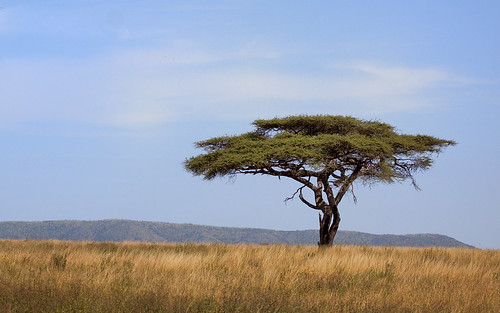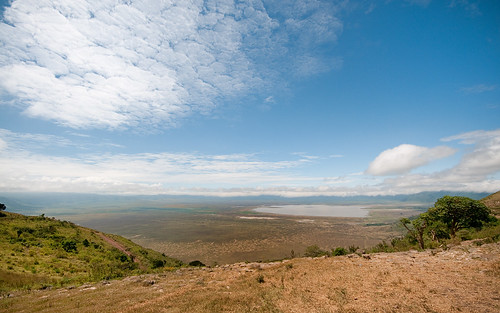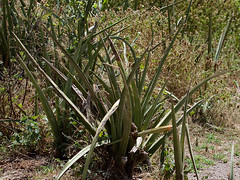After the morning game drive at Manyara national park, we proceeded towards the Serengeti National park which is about 200 kms and 4 hours of drive through the beautiful Ngorongoro caldera rim. Serengeti gets it’s name from the Masaii language word “seringitu” which means endless plains. The Serengeti plains are formed because of the volcanic ash strewn by the Ngorongoro volcano when it was active and are full of sulfurous salts, thus no dense forest here.


Rajai (our driver and guide) told us that before the Government of Tanzania declared Serengeti as a national park, it was home to two tribes; the Masaii, Datoga and *Hazabe Bushman tribe who were constantly clashing with each other over land and cattle. After the formation of the park, Masaii were given rights to live near the Serengeti while the Hazabe settled near Lake Eyasi. The Hazabe bushmen are hunters and eat the meat of wild animals (sometime even raw meat). The only animal they don’t eat is a Hyena as it is considered unclean. The Bushmen and speak the “click language” by clicking their tongue, teeth and palate**. The Datogas make ornament by melting iron, they are also adept in making spears and other hunting instrument which they sell to the Hazabe bushman in exchange of meat or money. Today under government protection while the numbers of Masaii are increasing, and they are even being schooled; the Hazabe bushman and Datoga are uneducated, culturally backward and their numbers are fast shrinking perhaps also due to genetic defects because of inbreeding which is very common, often within families too.

While Rajai was briefing us of the local Masaii culture, we couldn’t take eyes off the scenic beauty of the Ngorongoro Caldera rim which we had to cross to reach the Serengeti plains. The caldera rim at it’s highest was 2400 meters above sea level and the entirely covered with clouds. As we descended, we went by the 48 km long oldupai (also called as olduvai) gorge***. The fossiliferous gorge is named after the Olduvai plant, Sansevieria ehrenbergii, used by the Masaii as an antiseptic as a natural bandage and for stomach ailments. They also use it to make ropes, baskets, roofs and carpets. An Agave family plant, it is also a favourite food of Baboons, elephants, etc for it’s water content.
